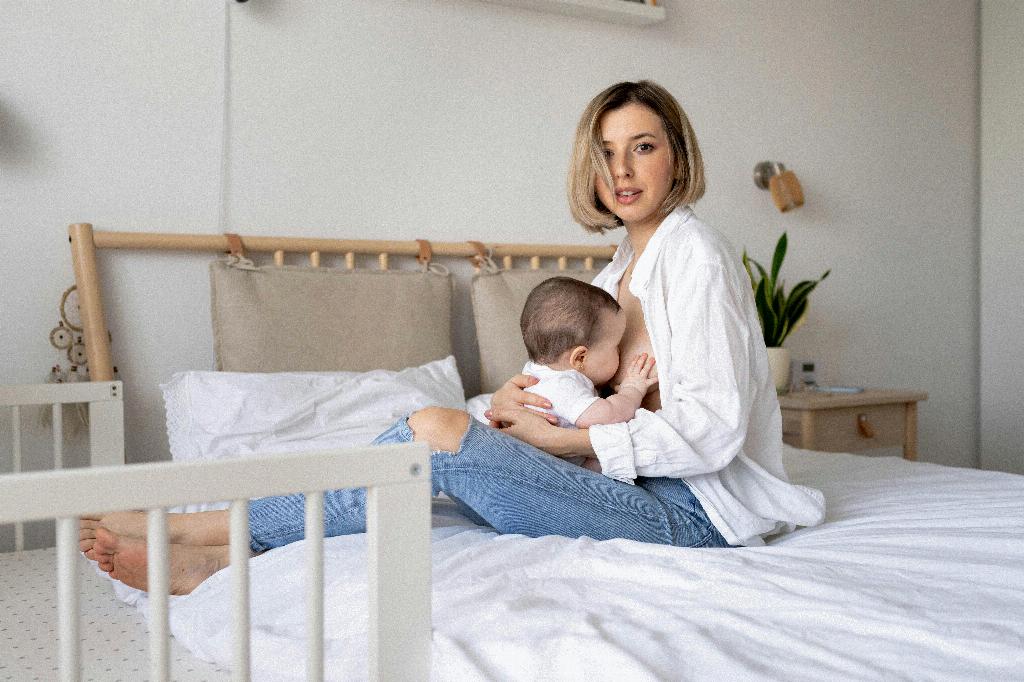When it comes to the safety and well-being of our babies, it’s crucial to distinguish between convenience and risk. While nursing pillows are designed to provide support and comfort during breastfeeding, using them as sleep surfaces for infants raises concerns that cannot be overlooked.
The American Academy of Pediatrics (AAP) guidelines advocate for placing babies to sleep on a firm, flat, and uncluttered surface to minimize the risk of Sudden Infant Death Syndrome (SIDS). The structured integrity of a crib or bassinet ensures that the baby’s airway remains unobstructed while they rest.
Nursing pillows, however, deviate from this recommended sleep environment. Their soft and malleable nature creates a potential hazard as they can conform to the baby’s face, increasing the risk of suffocation. The pillows may inadvertently mold around the baby’s head, restricting airflow and leading to a dangerous situation.
Aside from the risk of suffocation, nursing pillows can also predispose infants to positional asphyxia. This occurs when a baby’s head falls forward, chin to chest, inhibiting their ability to breathe freely. The structure of a nursing pillow does not provide the necessary support to prevent such risky postures.
Furthermore, the use of nursing pillows during sleep can lead to overheating, a known risk factor for SIDS. The lack of air circulation around the baby’s body when cradled in a nursing pillow can contribute to their body temperature rising to unsafe levels, increasing the likelihood of adverse events.
It is imperative for parents and caregivers to prioritize their child’s safety above all else, especially during vulnerable periods like sleep. While the convenience of allowing a baby to nap on a nursing pillow may seem appealing, the potential risks involved outweigh any perceived benefits.
Creating a safe sleep environment for infants involves adhering to evidence-based recommendations and guidelines established by pediatric experts. Choosing appropriate sleep surfaces that align with AAP recommendations can significantly reduce the risk of sleep-related accidents and ensure the baby’s well-being.
When considering alternative sleep arrangements, parents should opt for designated sleep spaces such as cribs, bassinets, or play yards that meet safety standards and promote a conducive sleep environment for infants. These structures are specifically designed to minimize hazards and provide a secure setting for babies to rest.
Additionally, maintaining a clear sleep area devoid of loose bedding, pillows, toys, or other soft items can help reduce the risk of suffocation or entrapment during sleep. The baby should be placed on their back to sleep, in a sleep sack or wearable blanket for warmth, rather than using loose blankets or clothing that may pose suffocation risks.
Parents are encouraged to stay vigilant and informed about safe sleep practices to protect their baby from potential harm. Educating oneself on the latest recommendations regarding infant sleep safety is crucial in ensuring a secure sleep environment that promotes healthy development and well-being.
In conclusion, it is not advisable to let a baby sleep on a nursing pillow due to the associated risks of suffocation, positional asphyxia, and overheating. Prioritizing safe sleep practices, adhering to expert guidelines, and utilizing designated sleep surfaces can help mitigate potential dangers and safeguard the baby’s sleep environment.

